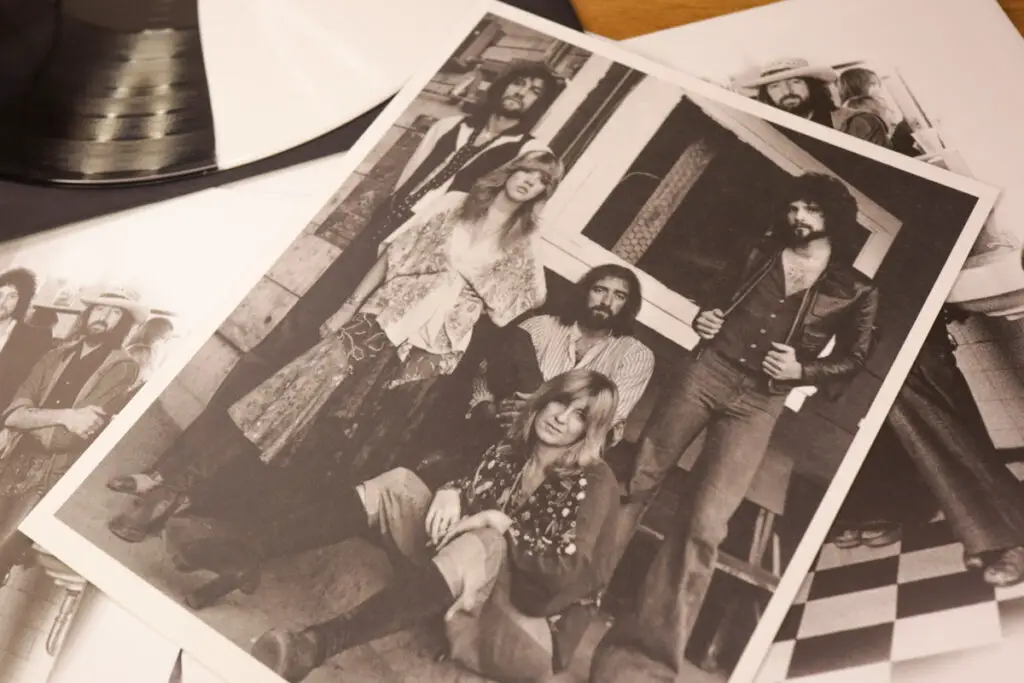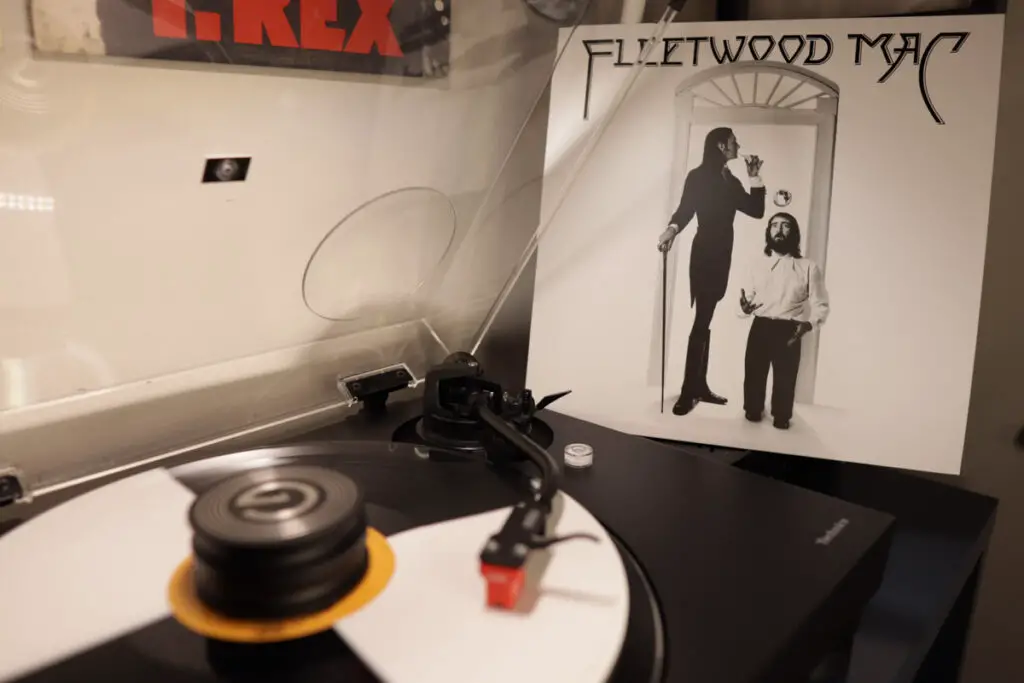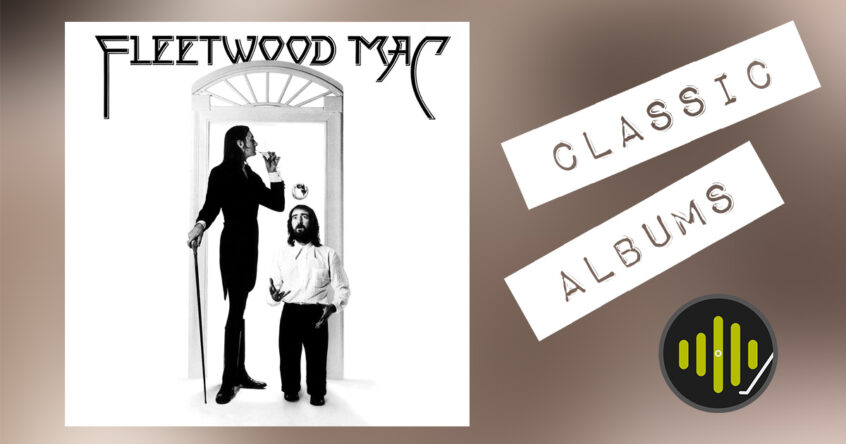The release of Fleetwood Mac’s self-titled album in 1975 saw the band move distinctly away from their British blues roots. The arrival of Stevie Nicks and Lindsey Buckingham symbolized more than a change in personnel; it heralded the birth of a sound that would become iconic. (Huge thanks to VMP for supplying the reissue copy of this record).
Founded in London by John McVie, Mick Fleetwood, and Peter Green in 1967, Fleetwood Mac started as a blues project.
In England, the band enjoyed relative success, managing to achieve an unlikely number one single in 1968 with the instrumental “Albatross”, alongside a string of top ten hits with tracks like “Oh Well”, “Man of the World”, and “The Green Manalishi”.
The latter of which arguably marks the beginnings of Fleetwood Mac’s ambitions to become more than just another blues band.
Front-man and guitar virtuoso, Peter Green was a deeply troubled individual and eventually crashed out of the band in 1970, leaving Fleetwood Mac in a state of flux.
The official addition of Christine McVie to the band in July 1970 gave a little wind to their sails, but the early 1970s would prove to be a turbulent time for the band with several lineup changes.
Fellow guitar player Jeremy Spencer initially stepped in to plug the creative gap left by Green, but he too would leave the band shortly after when he mysteriously disappeared in the middle of their 1971 tour. Later, it turned out he’d joined a religious cult. Spencer was replaced by American guitarist Bob Welch, bringing some stability back to the band.

Further disruption, however, was just around the corner with guitarist and singer Danny Kirwan, who joined the band in 1968, being fired the following year thanks to his alcohol-fueled erratic behavior.
Fleetwood brought in Bob Weston and Dave Walker as short-lived replacements for the 1973 album, Penguin. Walker was the first to go, staying only for Penguin with Weston leaving after 1973’s Mystery to Me.
In 1974, Fleetwood Mac made the strategic move from England to California. While in California, they produced the album Heroes Are Hard to Find and embarked on a tour. Following the completion of this tour, guitarist, singer, and songwriter Bob Welch departed from the band, bringing an end to the ninth iteration of Fleetwood Mac in a span of eight years.
Any other band might’ve taken this as a sign to call it a day, but in a twist of fate, their relocation to California was about to come into its own.
Prior to Welch’s departure, Mick Fleetwood met with producer Keith Olsen at Sound City Studio. Olsen pulled up a project he’d been working on by a new duo called Buckingham Nicks, partly to demonstarte his engineering skills.
Fleetwood not only bought into Olsen’s engineering skills, but he was also taken aback by Lindsey Buckingham’s guitar playing (particularly the guitar solo on the song “Frozen Love”.
The track “I’m So Afraid” on Fleetwood Mac perhaps bears the most resemblance to this early spark of inspiration for the band’s future direction.
Fleetwood was so impressed that he not only hired Olsen but also invited Buckingham to join the band who happened to be at Sound City that day.
Buckingham agreed but insisted that he and Nicks were a package deal.
Fleetwood accepted Buckingham’s condition, setting in motion the classic and longest-running lineup of the band, which now featured Lindsey Buckingham, Stevie Nicks, Christine McVie, John McVie and Mick Fleetwood. Within three months, the band had recorded the album Fleetwood Mac.
Many of the songs were actually earmarked for what would’ve been the sophomore Buckingham-Nicks album, including “Rhiannon,” “I’m So Afraid,” and “Monday Morning”; in addition, Fleetwood Mac also features a repurposed version of “Crystal” from the debut Buckingham-Nicks LP.

During the recording sessions, Buckingham’s creative vision for the band’s new direction caused significant tensions between him and John McVie, particularly over the decisions involving bass parts. McVie reminded Buckingham that “The band you’re in is Fleetwood Mac. I’m the Mac. And I play the bass.”

In several interviews, including one for the 1997 classic albums documentary on Rumours, Buckingham touches on how he and John McVie would “butt heads”, stating that “I came in certainly as the new kid on the block, but I also came in as the kid who had some ideas. John and I used to butt heads quite a bit in those days, and I think a lot of that was my fault, some of it certainly was his fault as well, but it just took me a long time to learn to appreciate John’s approach.”
Despite the commercial shift, the blues is not entirely absent from Fleetwood Mac, with the welcome addition of “World Turning”, which was written by Buckingham and Christine McVie, taking inspiration from Peter Green’s 1968 track “The World Keeps on Turning”. A beautiful homage to the band’s roots.
Though Fleetwood Mac is now regarded a classic, it’s easy to forget that by this point, the band were still relatively unknown in the US, and subsequently, success did not come overnight. The band took to the road, tirelessly promoting the record and showcasing their resolute work ethic. It took over a year of touring for the album to reach number 1 in September 1976 following its release on July 11, 1975.
Fleetwood Mac also triggered three top 20 singles, including “Over My Head”, “Rhiannon”, and “Say You Love Me”. The release of “Rhiannon”, in particular, caused listeners to stand and take note.
The success of Fleetwood Mac paved the way for 1977s Rumours, and was exactly the fresh start the band needed after years of turmoil. Commercial success, however, would come with new challenges, least of all the internal relationships between band members that were made additionally complex by there being two couples in the band.

There’s some merit in the fact that Fleetwood Mac was the tenth album created by the band in their tenth lineup. Call it destiny.
They accomplished what few artists could on Fleetwood Mac. Melding members from such disparate backgrounds into a style that is cohesive and independent at the same time. No two songs on the record sound alike.
Don’t call it a second act. Don’t call it luck. It was just meant to be.
If you’re a fan of this album, do check out the new VMP Essentials reissues. It was cut from AAA lacquers by Ryan Smith at Sterling Sound and it sounds really, really good!
VIEW ALBUM




Never mind, the comment was hidden, I clicked on the icon that shows how many comments several times and my comment never showed, but then on the 4th or 5th time I clicked on it, it popped up.
There can be a small delay sometimes, sorry about that. Thanks for your comment.
I had the Fleetwood Mac Rumors album, but it was a clear vinyl, and the quality of the pressing was horrible, brand new it had millions of pops and scratches, took it back got another and it was the same way, took it back, and got my money back.
Sounds like that color pressing has some quality issues. Get yourself a black vinyl copy. Discogs is worth a look in the comments to gauge other folks experiences with a pressing
I think the only album that we can call “self titled” was the 1968 original Peter Green band. AKA the “Dustbin ” issue.
The “classic” you discuss here is called Rumours.
I like both. They’re just different. I own both the “Dustbin” and this. I will accept though, the eras of Fleetwood Mac divide musical opinions.
Oh: and I did a similar feature on Rumours some time back also.